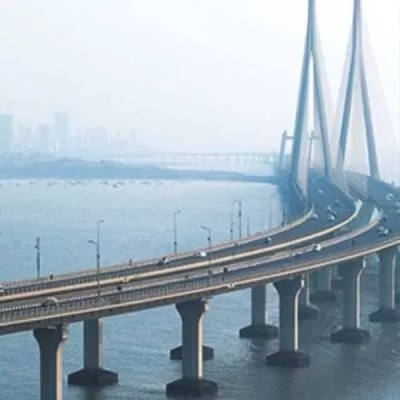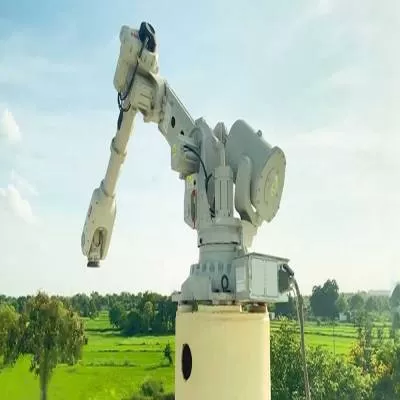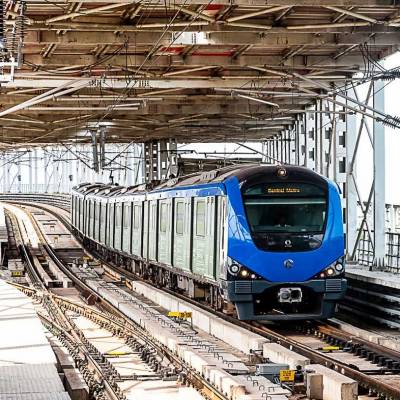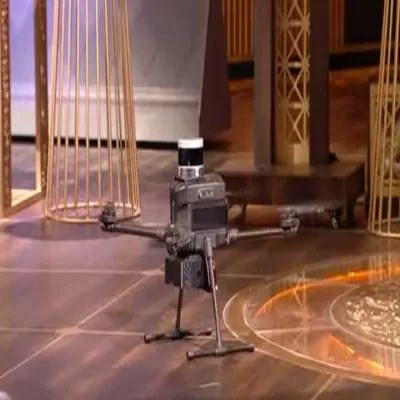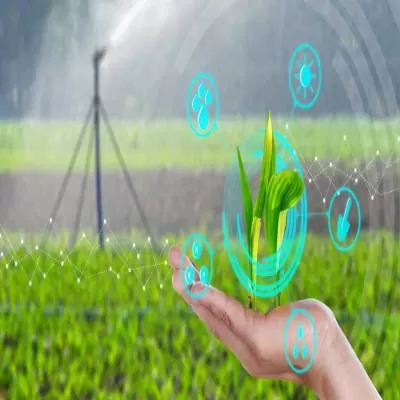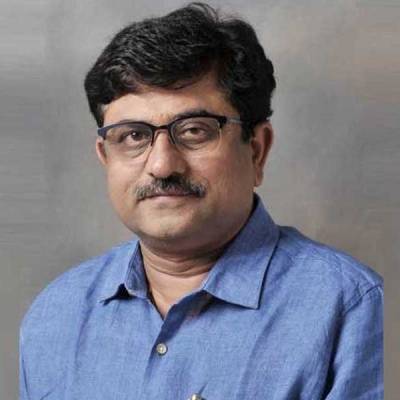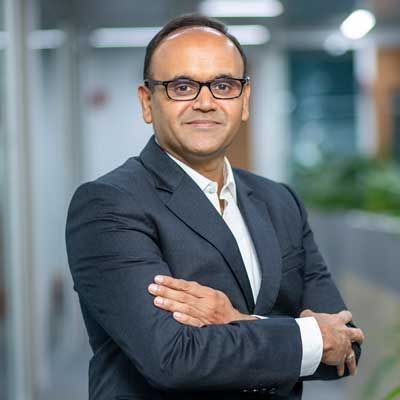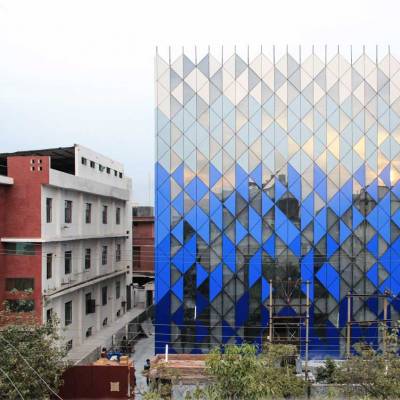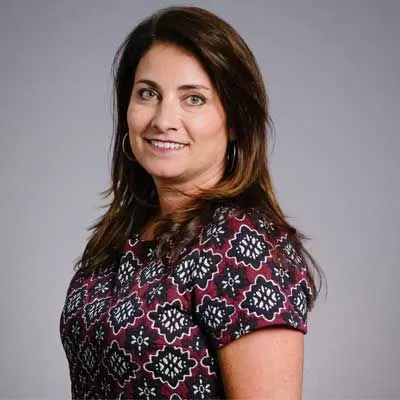- Home
- Technology
- Above And Beyond Boundaries

Above And Beyond Boundaries
This company has been making in India for over six decades. What´s more, on a global platform, the year 2016 marks 125 pioneering years for this Switzerland-based power and automation major. From the first design of industrial robots to the first high-voltage direct current transmission and the first LCD watch display, ABB has always been at the vanguard. In fact, on a tour to Switzerland, the CW team was witness to many of the company´s milestone projects, such as Gotthard Base Tunnel, Grimsel 2, Jungfrau Railway, TOSA, etc (see box for details). In India, too, the company has created a record for executing the world´s first multi-terminal HVDC for bulk transmission of power from the Northeast to high consumption regions over 1,700 km away in Agra with provision for reverse flow; and powered the core of the world´s longest canal-top solar project, enabling the world´s first fully solar-powered airport; and powering as well as automating the world´s biggest single-location solar power project. Eyeing India from a long-term perspective, Ulrich Spiesshofer, CEO, ABB Group, shared during a media interaction on Capital Markets Day 2016 in Switzerland: ´We look at India from a long term perspective. It is one of the largest economies in the world. We have been serving the country for more than 100 years with a good customer base. And, I see significant investments coming up in India in the areas of infrastructure and utility.´
Making the right connections in India
Products by ABB, such as drives, motors and industry-specific automation solutions, combine world-class productivity with a minimal environmental footprint, making ´Making in India´ even more attractive, increasing productivity while decoupling environment impact. Addressing power woes, projects such as the country´s first HVDC link (Vindhyanchal) and connecting the southern grid to the rest of India have improved the economics of how electricity reaches the farthest corners. The highest-rated transformer and circuit breaker in the world (1,200 kV), which can significantly reduce transmission losses over long distances, was designed in India for Power Grid´s test station in Beena.
Also, in an attempt to capitalise on India´s strength in software and services, the company is ushering the next level of manufacturing with IoTSP (the internet of things, services and people). For smart cities, the company is already in play in power network management solutions, city and gas water distribution automation and electrification of metro rail across major cities.
Next level of IoTSP
Indeed, the smart city initiative has brought opportunities aplenty - and ABB has much to offer. Based on foundations already laid, more than half its products are software-based. And the company continues to advance the digital industry through its concept of IoTSP. For instance, ABB´s competence centre in Bengaluru monitors over 5,000 in-service robots worldwide.
ABB´s IoTSP concept connects
the Internet of Things (IoT) with advanced services to enhance collaboration of machines, people and, ultimately, plants and companies, driving competitive advantage for customers.´Things´ are devices equipped with sensors, computing power and software. These devices have been used for many years in ABB´s automation and network control systems serving customers worldwide and, as such, were essential components of an´Industrial Intranet´. The IoTSP creates opportunities to provide new, advanced service models in collaboration with partners and customers, building on established services.
Further, so that low voltage motors around the world benefit from IoT, the company has innovated to come up with the first smart sensors for low voltage motors. A new condition monitoring solution, ABB´s smart sensor monitors and provides vital motor performance intelligence that helps improve uptime, extend motor lifetimes, and increase machine performance and productivity. It enables motors to be integrated into ABB´s expanding IoTSP concept.
Mergers and acquisitions
This is an area of interest for the company globally, as well as in India. Recently, ABB and Microsoft Corp announced a strategic partnership to help industrial customers create new value with digital solutions. Customers will benefit from the unique combination of the Microsoft Azure intelligent cloud and ABB´s deep domain knowledge and extensive portfolio of industrial solutions.
´This partnership will provide unique benefits to customers in utilities, industry, transport and infrastructure, building on the combined strength of Microsoft and ABB,´ said Spiesshofer. ´Building on our installed base of over 70 million connected devices and more than 70,000 digital control systems, the next step is to develop one of the world´s largest industrial cloud platforms.´
Also, towards shaping the company´s business model for power grids, ABB has formed a global partnership with Fluor and offshore wind grid connections partnership with Aibel. The aim has been to grow and de-risk.
Focus on R&D
ABB´s R&D centre in India, the largest R&D presence for the group across the world, encompasses over 2,500 R&D resources, innovating and indigenising global products for local markets and vice versa, while executing engineering projects across 40 countries from India. ´We have people all around the world focused on creating cutting-edge new solutions. We have a significant R&D footprint in India because it is a collaboration hub for all parts of the world,´ says Spiesshofer. He adds that the company spends about US$ 1.5 billion annually on R&D and that it is focusing on increasing efficiency on R&D.
Indeed, with the support of R&D, ABB has witnessed breakthroughs like predictive motors, solar pump drive, compact ring main unit for secondary distribution, reactive power management and cost-effective 145-kV live tank breakers. As Spiesshofer affirms, ´We have many firsts and that will be
Gotthard Base Tunnel
- The longest and deepest railway tunnel in the world
- The strongest ventilation system in the world
ABB Group has been responsible for the planning, delivery, installation and commissioning of the rail power supply and power distribution system in this project. It has also supplied the power technology, including gas-insulated medium-voltage switchgear and protection equipment for the tunnel infrastructure´s power supply. Around 900 medium-voltage units guarantee reliable power supply. According to Ralf Roesch, Head of Traffic & Tunnel Infrastructure, ABB Switzerland, ´ABB has supplied, among other things, 50 hz power supply for the tunnel infrastructure; 899 medium-voltage switchgears; over 500 protection and control units; over 300 transformers; and over 21 km of cable protection systems.´ He adds that the tunnel ventilation system is among the world´s most powerful (15.6 MW of power, equivalent to 80 Formula E racing cars). Also, fire water supply is ensured at multifunction stations. the pattern going forward.´
Jungfrau Railway
One of only four rail lines worldwide to rely on three-phase power
This railway went into operation in 1912, after 16 years of construction. Since then, it has continuously carried tourists to the Jungfraujoch (3,454 m above sea level), Europe´s highest train station. Owing to the custom-designed traction system from ABB, the railway continues to run without interruption, even in deep snow. The low-voltage IGBT technology, with its high switching frequency (around 2 kHz), generates an almost perfect sine wave, which reduces power losses and traction motor stress. The regenerative drive feeds power back into the grid via the traction converter and transformer during braking operations. The snow-thrower locomotive has been in operation since the winter of 2012/13, providing reliable winter rail service.
Grimsel 2
The world´s largest frequency converter installed at the pump storage plant here
This plant could previously only adjust to the amount of absorbed power during pump operation by regulating the number of pumps used. One challenge ABB faced was to install a full power converter system for variable speed operation, keeping the electrical machine from the 1980s unchanged. The solution had to fit into the existing powerhouse. Thus, it installed a 100 mva frequency converter, the world´s largest of this kind for a variable-speed pumped hydropower application. Water is pumped from the lower to the upper lake, and is allowed to flow from the upper to the lower lake at a speed of 88 cu m per second. The converter maintains the speed of the pumps at between 600 and 765 rpm and helps stabilise the grid. The pump storage hydro power station acts as a control for the power grid and provides additional electrical energy as needed. Calling this a milestone in the Alps, Steve Aubert, Project Manager-Hydro Power Converters, says, ´KWO utilises valuable water to generate primary control energy. Moreover, this is the biggest full converter for hydro application worldwide. There is optimum backup solution for integration of renewable energy sources.´
TOSA
- World´s fastest bus flash charging device
- Zero local emission mobility
Here is an e-bus with 15-second, flash-charging technology at selected bus stops. ABB´s TOSA is an ideal solution for silent, flexible and zero-emission, mass transportation. The fully electric bus looks like a regular trolleybus, except when you look on the roof. This e-bus has a controlled moving arm that connects, in less than a second, to an overhead receptacle integrated into the bus shelter. The onboard batteries can be charged in 15 seconds with a 600-kW boost of power at the bus stop. A further four to five-minute charge at the terminus at the end of the line enables a full recharge of the batteries. Bruce Warner, Global Product Specialist-Rail and Urban Transportation, ABB, says, ´The energy storage for peak shaving has been designed according to local grid requirements and the line´s operation.´ Compared to existing diesel buses, the e-buses can help save as much as 1,000 tonne of CO2 per year. And, owing to the recharging along the route, the battery size and the weight of the bus have been reduced, resulting in an increase in both passenger space and energy-efficiency.
- SHRIYAL SETHUMADHAVAN
To share your views on this article, write in at feedback@ConstructionWorld.in
Following a recent visit to ABB´s headquarters in Switzerland, CW reports on the company´s landmark global projects, and its future plans for India. This company has been making in India for over six decades. What´s more, on a global platform, the year 2016 marks 125 pioneering years for this Switzerland-based power and automation major. From the first design of industrial robots to the first high-voltage direct current transmission and the first LCD watch display, ABB has always been at the vanguard. In fact, on a tour to Switzerland, the CW team was witness to many of the company´s milestone projects, such as Gotthard Base Tunnel, Grimsel 2, Jungfrau Railway, TOSA, etc (see box for details). In India, too, the company has created a record for executing the world´s first multi-terminal HVDC for bulk transmission of power from the Northeast to high consumption regions over 1,700 km away in Agra with provision for reverse flow; and powered the core of the world´s longest canal-top solar project, enabling the world´s first fully solar-powered airport; and powering as well as automating the world´s biggest single-location solar power project. Eyeing India from a long-term perspective, Ulrich Spiesshofer, CEO, ABB Group, shared during a media interaction on Capital Markets Day 2016 in Switzerland: ´We look at India from a long term perspective. It is one of the largest economies in the world. We have been serving the country for more than 100 years with a good customer base. And, I see significant investments coming up in India in the areas of infrastructure and utility.´ Making the right connections in India Products by ABB, such as drives, motors and industry-specific automation solutions, combine world-class productivity with a minimal environmental footprint, making ´Making in India´ even more attractive, increasing productivity while decoupling environment impact. Addressing power woes, projects such as the country´s first HVDC link (Vindhyanchal) and connecting the southern grid to the rest of India have improved the economics of how electricity reaches the farthest corners. The highest-rated transformer and circuit breaker in the world (1,200 kV), which can significantly reduce transmission losses over long distances, was designed in India for Power Grid´s test station in Beena. Also, in an attempt to capitalise on India´s strength in software and services, the company is ushering the next level of manufacturing with IoTSP (the internet of things, services and people). For smart cities, the company is already in play in power network management solutions, city and gas water distribution automation and electrification of metro rail across major cities. Next level of IoTSP Indeed, the smart city initiative has brought opportunities aplenty - and ABB has much to offer. Based on foundations already laid, more than half its products are software-based. And the company continues to advance the digital industry through its concept of IoTSP. For instance, ABB´s competence centre in Bengaluru monitors over 5,000 in-service robots worldwide. ABB´s IoTSP concept connects the Internet of Things (IoT) with advanced services to enhance collaboration of machines, people and, ultimately, plants and companies, driving competitive advantage for customers.´Things´ are devices equipped with sensors, computing power and software. These devices have been used for many years in ABB´s automation and network control systems serving customers worldwide and, as such, were essential components of an´Industrial Intranet´. The IoTSP creates opportunities to provide new, advanced service models in collaboration with partners and customers, building on established services. Further, so that low voltage motors around the world benefit from IoT, the company has innovated to come up with the first smart sensors for low voltage motors. A new condition monitoring solution, ABB´s smart sensor monitors and provides vital motor performance intelligence that helps improve uptime, extend motor lifetimes, and increase machine performance and productivity. It enables motors to be integrated into ABB´s expanding IoTSP concept. Mergers and acquisitions This is an area of interest for the company globally, as well as in India. Recently, ABB and Microsoft Corp announced a strategic partnership to help industrial customers create new value with digital solutions. Customers will benefit from the unique combination of the Microsoft Azure intelligent cloud and ABB´s deep domain knowledge and extensive portfolio of industrial solutions. ´This partnership will provide unique benefits to customers in utilities, industry, transport and infrastructure, building on the combined strength of Microsoft and ABB,´ said Spiesshofer. ´Building on our installed base of over 70 million connected devices and more than 70,000 digital control systems, the next step is to develop one of the world´s largest industrial cloud platforms.´ Also, towards shaping the company´s business model for power grids, ABB has formed a global partnership with Fluor and offshore wind grid connections partnership with Aibel. The aim has been to grow and de-risk. Focus on R&D ABB´s R&D centre in India, the largest R&D presence for the group across the world, encompasses over 2,500 R&D resources, innovating and indigenising global products for local markets and vice versa, while executing engineering projects across 40 countries from India. ´We have people all around the world focused on creating cutting-edge new solutions. We have a significant R&D footprint in India because it is a collaboration hub for all parts of the world,´ says Spiesshofer. He adds that the company spends about US$ 1.5 billion annually on R&D and that it is focusing on increasing efficiency on R&D. Indeed, with the support of R&D, ABB has witnessed breakthroughs like predictive motors, solar pump drive, compact ring main unit for secondary distribution, reactive power management and cost-effective 145-kV live tank breakers. As Spiesshofer affirms, ´We have many firsts and that will be Gotthard Base Tunnel The longest and deepest railway tunnel in the world The strongest ventilation system in the world ABB Group has been responsible for the planning, delivery, installation and commissioning of the rail power supply and power distribution system in this project. It has also supplied the power technology, including gas-insulated medium-voltage switchgear and protection equipment for the tunnel infrastructure´s power supply. Around 900 medium-voltage units guarantee reliable power supply. According to Ralf Roesch, Head of Traffic & Tunnel Infrastructure, ABB Switzerland, ´ABB has supplied, among other things, 50 hz power supply for the tunnel infrastructure; 899 medium-voltage switchgears; over 500 protection and control units; over 300 transformers; and over 21 km of cable protection systems.´ He adds that the tunnel ventilation system is among the world´s most powerful (15.6 MW of power, equivalent to 80 Formula E racing cars). Also, fire water supply is ensured at multifunction stations. the pattern going forward.´ Jungfrau Railway One of only four rail lines worldwide to rely on three-phase power This railway went into operation in 1912, after 16 years of construction. Since then, it has continuously carried tourists to the Jungfraujoch (3,454 m above sea level), Europe´s highest train station. Owing to the custom-designed traction system from ABB, the railway continues to run without interruption, even in deep snow. The low-voltage IGBT technology, with its high switching frequency (around 2 kHz), generates an almost perfect sine wave, which reduces power losses and traction motor stress. The regenerative drive feeds power back into the grid via the traction converter and transformer during braking operations. The snow-thrower locomotive has been in operation since the winter of 2012/13, providing reliable winter rail service. Grimsel 2 The world´s largest frequency converter installed at the pump storage plant here This plant could previously only adjust to the amount of absorbed power during pump operation by regulating the number of pumps used. One challenge ABB faced was to install a full power converter system for variable speed operation, keeping the electrical machine from the 1980s unchanged. The solution had to fit into the existing powerhouse. Thus, it installed a 100 mva frequency converter, the world´s largest of this kind for a variable-speed pumped hydropower application. Water is pumped from the lower to the upper lake, and is allowed to flow from the upper to the lower lake at a speed of 88 cu m per second. The converter maintains the speed of the pumps at between 600 and 765 rpm and helps stabilise the grid. The pump storage hydro power station acts as a control for the power grid and provides additional electrical energy as needed. Calling this a milestone in the Alps, Steve Aubert, Project Manager-Hydro Power Converters, says, ´KWO utilises valuable water to generate primary control energy. Moreover, this is the biggest full converter for hydro application worldwide. There is optimum backup solution for integration of renewable energy sources.´ TOSA World´s fastest bus flash charging device Zero local emission mobility Here is an e-bus with 15-second, flash-charging technology at selected bus stops. ABB´s TOSA is an ideal solution for silent, flexible and zero-emission, mass transportation. The fully electric bus looks like a regular trolleybus, except when you look on the roof. This e-bus has a controlled moving arm that connects, in less than a second, to an overhead receptacle integrated into the bus shelter. The onboard batteries can be charged in 15 seconds with a 600-kW boost of power at the bus stop. A further four to five-minute charge at the terminus at the end of the line enables a full recharge of the batteries. Bruce Warner, Global Product Specialist-Rail and Urban Transportation, ABB, says, ´The energy storage for peak shaving has been designed according to local grid requirements and the line´s operation.´ Compared to existing diesel buses, the e-buses can help save as much as 1,000 tonne of CO2 per year. And, owing to the recharging along the route, the battery size and the weight of the bus have been reduced, resulting in an increase in both passenger space and energy-efficiency. - SHRIYAL SETHUMADHAVAN To share your views on this article, write in at feedback@ConstructionWorld.in


